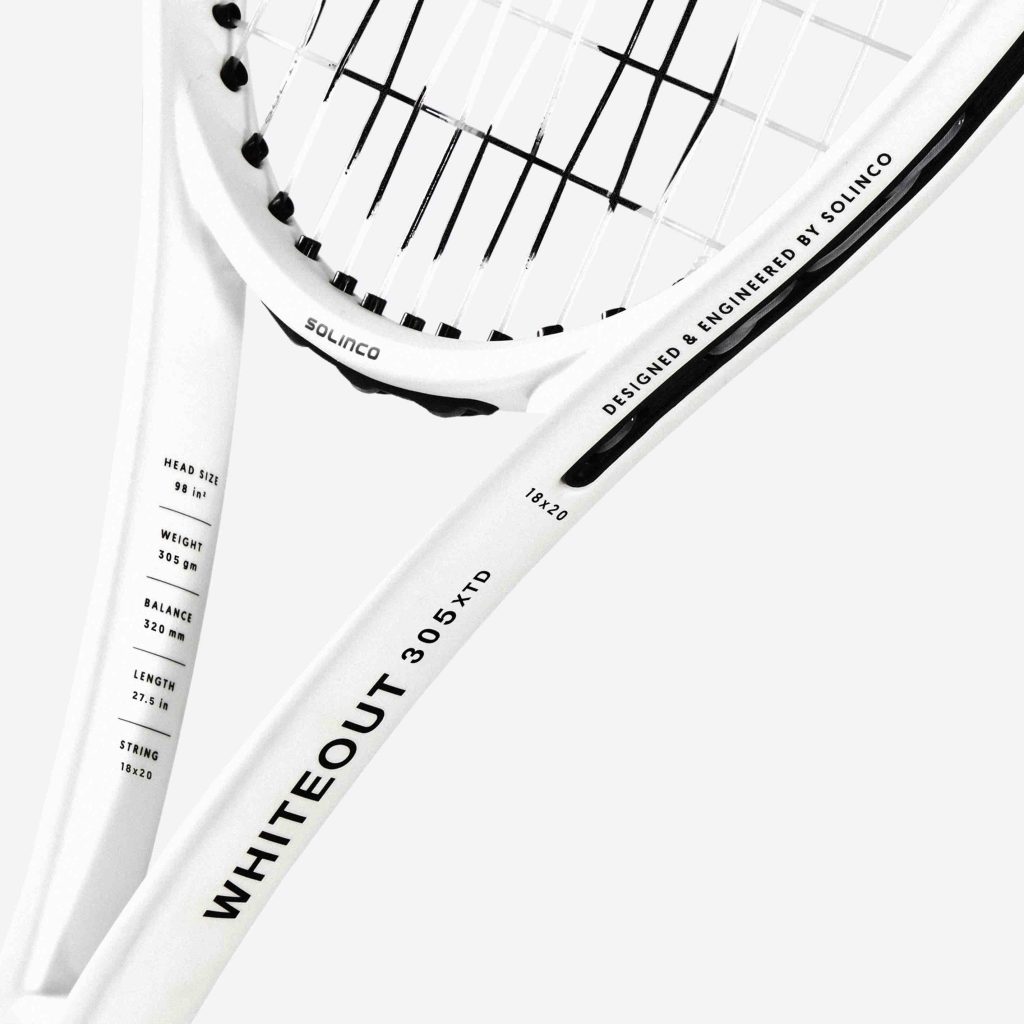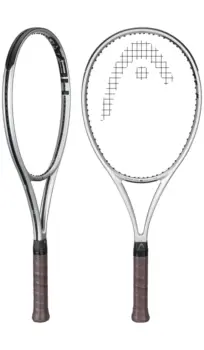We have a new contributor on the website, Oak Gast, a 4.5 NTRP player from San Luis Obispo, CA. Here is his Solinco Whiteout 18×20 XTD Review.
Solinco Whiteout 18×20 XTD Review
Before we dip into the review, let’s look at the specifications from Tennis Warehouse. You can also check out our review of the Solinco Whiteout 18×20 or the Solinco Whiteout 16×19.
| Head Size: 98 in / 632.26 cm | ||
| Length: 27.5in / 69.85cm | ||
| Strung Weight:11.4oz / 323g | ||
| Balance: 13in / 33.02cm / 6 pts HL | ||
| Swingweight: 331 | ||
| Stiffness: 65 | ||
| Beam Width: 21.7mm / 21.7mm / 21.7mm | ||
| Composition: 40T Carbon/Graphite | ||
| Power Level: Low | ||
| Stroke Style: Full | ||
| Swing Speed: Fast | ||
| Racquet Colors:White | ||
| Grip Type: Solinco Synthetic | ||
String Pattern:
|
The frame’s design feels ultimately balanced in the purest sense of that word. Spec-wise, practically every characteristic has a perfect complement otherwise located in the frame’s construction. From a top-down perspective, the racquet exists in a class of its own. It is the only extended-length 18×20 frame you can get from mainstream manufacturers. The pairing of these two particular specs outlines the approach to the frame in that control comfortably melds with power from a highly intentional design angle.
How does it play?
The extended nature of the racquet offers greater reach and additional leverage due to its 27.5” length. From a groundstroke perspective, users now have a larger wingspan and hitting zone, which can be converted into additional power and pop if appropriately timed. Length-sensitive players will notice how the additional half-inch gives you some extra capability in terms of defensive play. I also found the length to change the overall launch angle on my forehand slice, arriving later to the ball in terms of timing. Additionally, the slice felt lower to the net but had compensated with more directional control to make up for a smaller clearance margin. The length makes itself known on the serves for providing an increased downward angle on the ball. As someone who has always struggled with height on the serve, I was pretty satisfied with this impact.
On volleys, the length does make it more challenging to maneuver, but the pros outweigh the cons here. The extra length gives you more reach, which is extremely helpful on stretch volleys, high volleys, and tougher overheads. Further, the extended contact point encouraged me to get to my volleys faster and more in front of my body, which also ended up manifesting well results-wise.
Summary
What makes this Whiteout so captivating though, is that it has a denser string pattern to offer increased control in relation to all of the aforementioned power capabilities. The 18×20 essentially reigns in all of the pop the frame is working with, encouraging good timing, hitting through the ball, and better targeting. By having more directional input with more strings, the frame allows for players to control and experiment with the length-based power impacts. The 18×20 feels surprisingly open too, which mitigates the often heard complaint of denser patterns not being spin-friendly enough. Furthermore, the racquet is able to get away with a somewhat high stiffness (65 RA) due to the foam-filled interior. Solinco has seemingly taken a page out of Tecnifibre’s book here, as the foam adds additional comfort due to shock distribution.
On top of that, I’ve noticed foam-filled frames typically allow for some additional maneuverability, which is a nice bonus considering the less-wieldy 27.5” length. You combine all of this with a swing weight that averages above 330 pts strung, and you get a seriously versatile frame.
The Whiteout has exceeded my expectations in nearly every aspect of the hitting experience. It is a frame that toes the line perfectly in terms of versatility, and I cannot recommend it enough in terms of something that can both encourage good technique as well as mix up one’s playing styles.
About the reviewer
Oak Gast is a 4.5/5.0 tennis player in San Luis Obispo, CA. As a product specialist at Tennis Warehouse, Oak oversees orders and customer communication internally within the racquets department. Additionally, Oak uses his M.A. degree in English to develop writings around various equipment, such as racquets, strings, and shoes, and the geopolitical significance of tennis as an international sport. Personal research topics include modality of information, Romantic literature, and film studies.
















